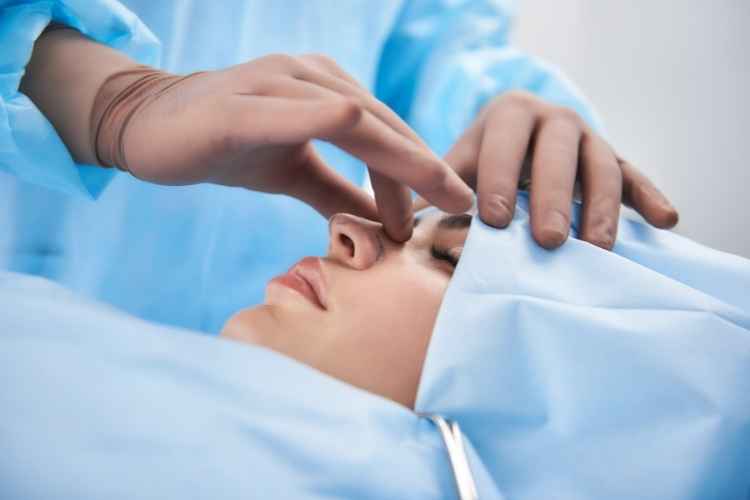What is Rhinoplasty?
Rhinoplasty (RIE-no-plas-tee) is a surgical procedure that alters the form of the nose. The procedure may be performed to enhance breathing, change the look of the nose, or both.
The upper section of the nose is made of bone, while the lower part is made of cartilage. Rhinoplasty is a surgery that remodels the nose. It can change the bump, tip, or profile of the nose and can alter bone, cartilage, skin at the same time. Your doctor/surgeon will assess your other facial characteristics, the skin on your nose, and what you want to change while planning the procedure.
Rhinoplasty, like any major surgery, has risks, including:
- Infection
- Bleeding
- Anaesthesia-related side effects
Other potential rhinoplasty concerns include:
- Scarring
- Numbness in the nose area
- The potential of a crooked nose
- Extra procedures may be needed
- Pain
- Difficulty breathing through your nose
In order to minimise the risks associated with surgery, many people are now considering non-surgical rhinoplasty. This article will inform you of all the things you need to know about non-surgical rhinoplasty.
Non-Surgical Rhinoplasty
Injectable dermal filler materials are used in nonsurgical rhinoplasty to modify the shape of your nose. A gel-like substance (typically hyaluronic acid) is injected and distributed under your skin where you want to create smoother lines and volume. Dermatologists and plastic surgeons recommend the filler ingredient because it can easily penetrate the deeper layers of skin without fear of falling flat. Contingent on your skin, desired outcomes, and the substance used, this can modify the appearance of your nose for up to three years.
Non-surgical rhinoplasty (also known as ‘liquid rhinoplasty’) is a relatively straightforward technique, especially in comparison to surgical rhinoplasty.
The doctor will lay you down with your face tilted up after consultation when you will discuss your desired results. A topical anaesthetic may be administered to your nose and surrounding area to prevent pain from the insertion.
They will proceed to inject the filler into the region around your nose and maybe the bridge of your nose after the anaesthetic has taken effect. While this is being done, you may feel some pressure.
The entire procedure can take anything from 15 minutes to 45 minutes.
After The Procedure…
You may experience swelling, pain, and redness where your shot was administered during liquid rhinoplasty. The injection usually begins to settle after an hour or two. The redness should fade, and you’ll be able to see your intended results more clearly.
After your appointment, take an ice pack to use – consult your doctor before using it to reduce inflammation.
Within a week or two, full results should be available. By then, any bruises should have gone away altogether.
People that vouch for liquid rhinoplasty stand by the fact that there is virtually no downtime – the next day, you can return to work and your regular activities as normal!
How Much Does It Cost?
Non-surgical rhinoplasty consultations are relatively low-cost & even free in some establishments, but a small deposit may be requested to confirm the consultation.
Your consultant will schedule a follow-up appointment for 2 weeks later for an evaluation, which may include a complimentary top-up if necessary.
When it comes to non-surgical rhinoplasty, you DO NOT want to go with the cheapest option because they might not have a lot of experience with this specific treatment. A competent plastic surgeon will know exactly what to do to achieve the results you desire while minimising the risk of negative side effects.
Conclusion
Here are some useful pointers you should take away in order to prepare for your rhinoplasty correctly:
- Before your appointment, drink lots of water and eat a light lunch. You shouldn’t overeat because you might feel queasy before or after the session, but you should eat something containing starch and protein.
- In the week leading up to the surgery, avoid anti-inflammatory medications, aspirin, vitamin E supplements, and any other blood-thinning food supplements. Make sure your doctor is aware of any medications you’re taking.
- To lessen the chance of bruising, keep track of your vitamin K levels. In the weeks leading up to your treatment, eat a lot of green vegetables to enhance your vitamin K levels.

